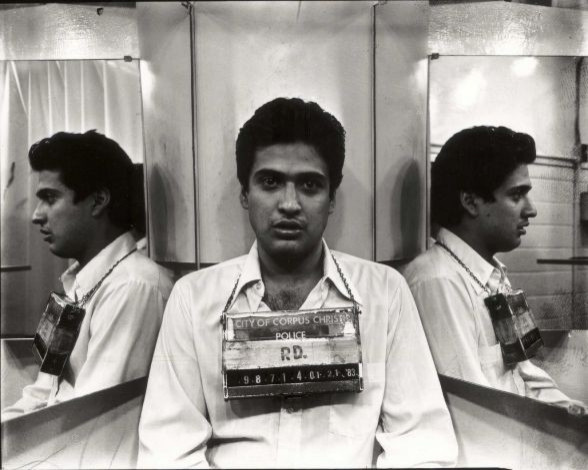A Tale of Two Carlos': Texas Put An Innocent Man To Death, Concludes Columbia University Investigation

Already under pressure over whether it executed an innocent man in 2004, the state of Texas is now facing questions regarding another man who may have been wrongfully sent to death for a crime he did not commit.
On Tuesday, Columbia University's Human Rights Law Review (CUHRLR) posted online a 400-page investigation into the execution of Carlos DeLuna, who was put to death in 1989 for the murder of Corpus Christi gas station clerk Wanda Lopez.
The crime was grisly: Lopez, a 24-year-old single mother working the night shift, called the police on the night of Feb. 4, 1983, after a customer informed her a man with a fold-out knife was loitering in front of the store. A 911 recording of the incident captured Lopez answering a series of yes or no questions about the intimidating customer, who reportedly approached the counter to purchase a pack of cigarettes. Soon after, Lopez is heard pleading for her life before the line is abruptly cut off.
A new website launched by the CUHRLR investigates the brutal crime and its ultimately questionable conviction in a report titled Los Tocayos Carlos: An Anatomy of a Wrongful Execution. The website includes access to the crime scene photos, court records, police audiotapes and videotaped interviews that the law review used in its exhaustive investigation of the murder and subsequent conviction.
The report is the latest in which death penalty opponents seek to prove that Texas, which has executed 482 death row inmates since 1982, is more eager to apply capital punishment than it ought to be. The state has been criticized heavily over its 2004 execution of Cameron Todd Willingham, who was exonerated in 2011 after a forensic investigation concluded he likely was not responsible for setting a fire that killed his three young daughters.
Still, Steve Schiwiz, a lead prosecutor at DeLuna's trial who said he had not read the journal article, insists the original investigation was accurate.
These guys are crusaders, he told the San Antonio Express-News after the newspaper informed him of the authors' conclusions. What can I say?
DeLuna, according to the journal article, was reportedly a poor Hispanic man with a childlike intelligence who unfortunately bore a strong resemblance to Carlos Hernandez, the man investigators believe actually killed Lopez. On the night of Lopez's death, DeLuna, then 20, was found hiding under a pickup truck a few blocks away from the crime scene. A wad of rolled-up bills totaling $149 was found in his pocket.
Hernandez, on the other hand, was a man with a violent criminal history who was well known to police. According to the San Antonio Express-News, Hernandez reveled in his reputation as a thug and boasted of strangling a young woman and then carving an X on her back as her young child slept nearby.
A series of eyewitness testimonies implicated DeLuna in a criminal investigation that would ultimately lead to his death. A customer filling his tank at the gas station before the murder told police that DeLuna was the man he saw with a knife in his pocket. Meanwhile, another customer who reportedly rushed to the store's entrance when he heard Lopez struggling also identified DeLuna as the culprit, while a married couple who said they saw a man running a few blocks away from the crime scene later identified DeLuna through police photos that were presented to them.
Police concluded that DeLuna, who had been arrested on several occasions for burglary, and who also had a conviction for attempted rape, was the perpetrator. DeLuna insisted he had not committed the crime from the time of his arrest to the day of his death, six years later. Rev. Carroll Pickett, the death row chaplain who presided over DeLuna's execution, told CUHRLR that he was struck by DeLuna's claim of innocence until his very last breath, saying that inmates would typically confess their crimes before facing death. Pickett, who believes DeLuna was innocent, said the case inspired him to become an advocate for the abolition of the death penalty.
Among the key findings in the Columbia team's report were:
- There were discrepancies in the eyewitness accounts from the beginning: The gas station customer reported seeing a shabby, unshaven man at the scene, while the married couple said they saw a well-groomed man in a white shirt and dress pants, suggesting the witnesses were describing different people.
- On the night of the robbery, DeLuna was clean-shaven and wearing a white shirt. Hernandez -- who DeLuna would eventually name as the culprit, to no avail -- typically wore a mustache and dressed sloppily.
- Photos of a bloody footprint and blood spattered on the walls of the convenience store suggest the killer would have had blood on his shoes and pant legs. DeLuna's clothes were clean when he was apprehended by police.
- Prosecutors and police ignored tips (unearthed in police files) pointing to Hernandez -- who was acquainted with DeLuna -- as the murderer. Hernandez reportedly had a reputation for wielding a fold-out blade and had been convicted for a series of convenience store robberies. Individuals who knew Hernandez say he bragged about killing Lopez and laughed when DeLuna took the fall.
The evidence does not bode well for the state of Texas, which applies capital punishment at a far higher rate than the rest of the nation does. Almost a third of all executions that have taken place in the U.S. since 1976 have been in Texas, according to the Death Penalty Information Center. The state has already put five prisoners to death in the first four months of 2012.
© Copyright IBTimes 2024. All rights reserved.





















